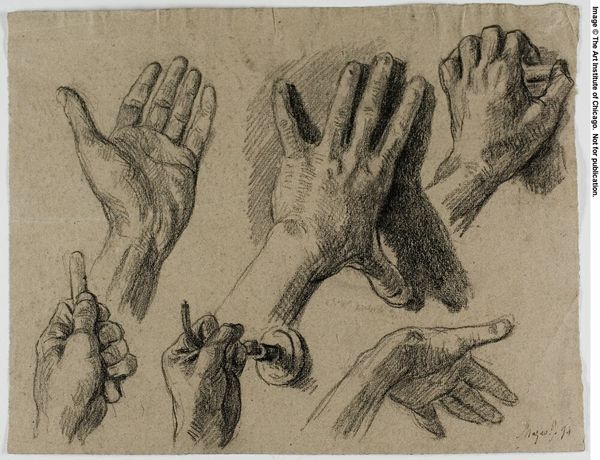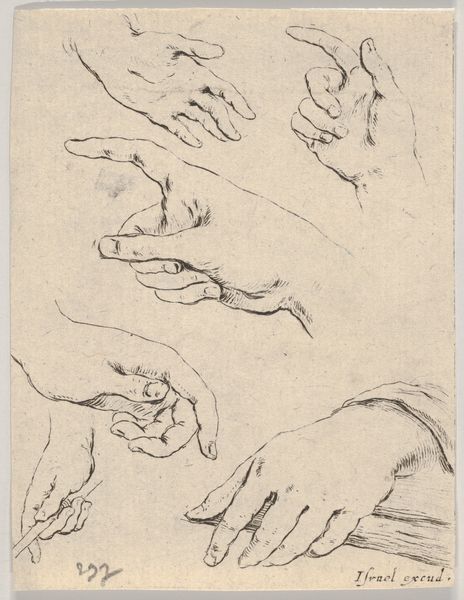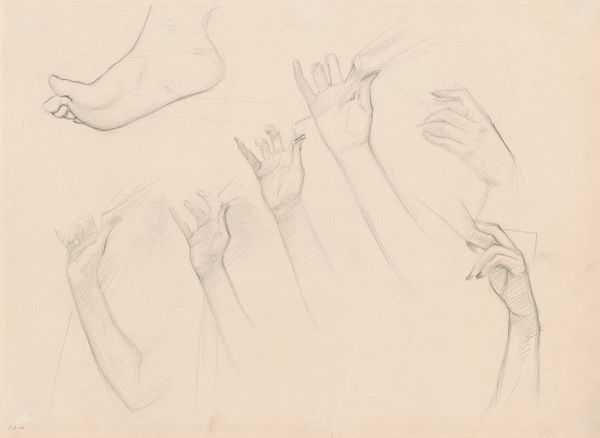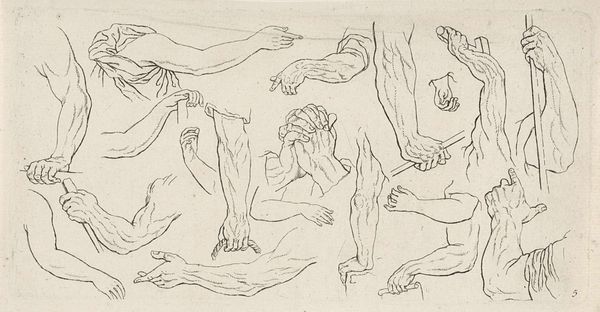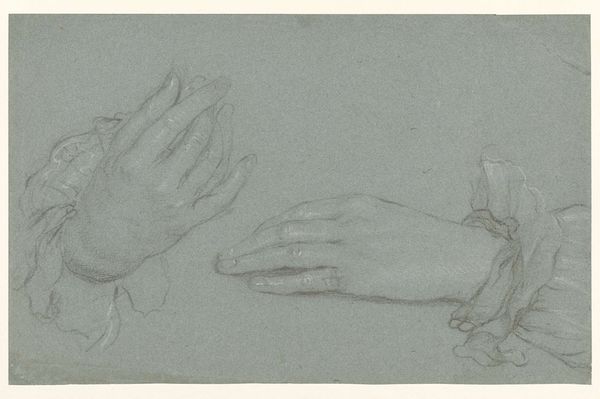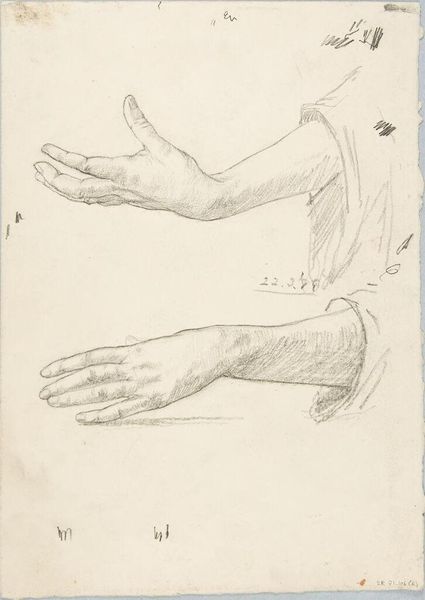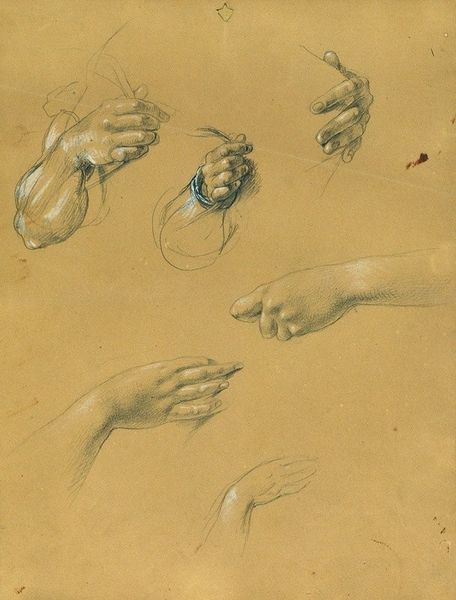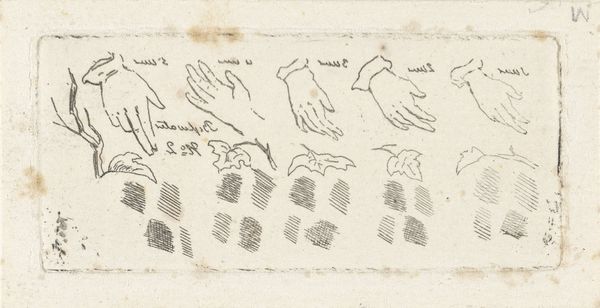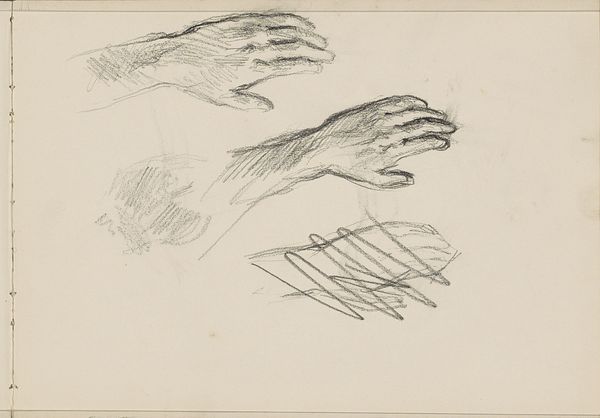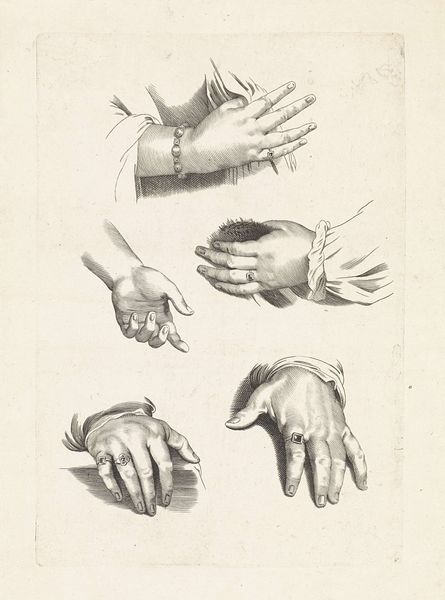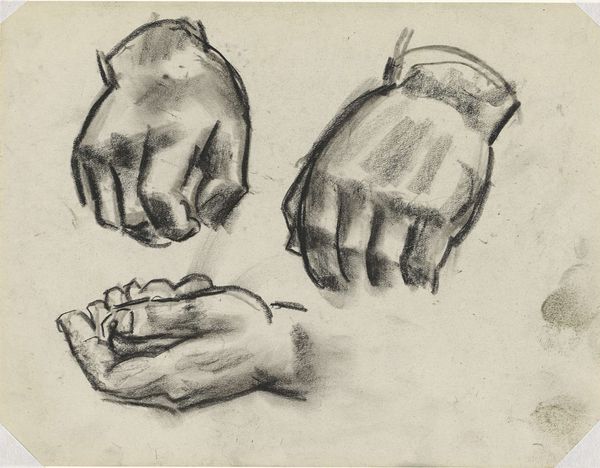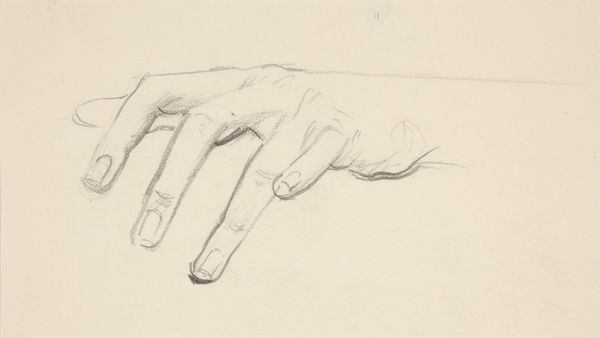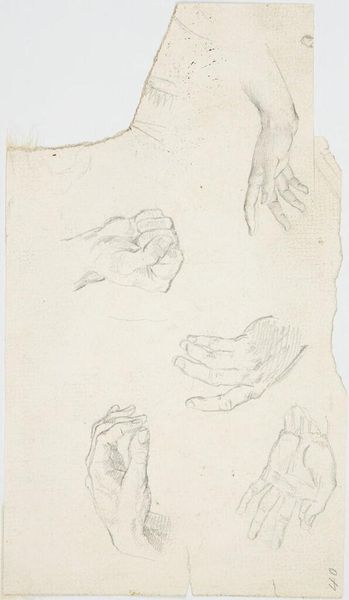
drawing, ink, pen
#
portrait
#
drawing
#
comic strip sketch
#
baroque
#
pen sketch
#
classical-realism
#
figuration
#
personal sketchbook
#
ink
#
sketchwork
#
ink drawing experimentation
#
pen-ink sketch
#
pen work
#
sketchbook drawing
#
pen
#
storyboard and sketchbook work
#
academic-art
#
sketchbook art
Dimensions: height 94 mm, width 189 mm
Copyright: Rijks Museum: Open Domain
Editor: So, this is Leonard Schenk's "Studies van handen," created sometime between 1710 and 1767. It's an ink and pen drawing at the Rijksmuseum. There's a real simplicity to it – just a page full of hands in different poses. What stands out to you? How do you interpret this work? Curator: The hand, throughout art history, is a profound symbol. Consider its representation across different eras - from the benedictory gestures of saints in religious iconography to the expressive hands of figures in Renaissance portraiture, the hand carries immense symbolic weight. Notice how each hand conveys not just a physical position, but also potential actions, emotions, and even social status. Editor: I hadn't thought of the different meanings the hands can create depending on what it holds! Is that stick important, for example? Or just something Schenk saw? Curator: That’s the core of the visual language: hands holding tools, pointing, reaching - these are potent symbols of agency and communication. Each gesture alludes to a narrative, a possible interaction. Are those wrinkles an element of realism, or something more? What do *they* suggest? Editor: Age, maybe experience? I do find myself inventing little stories about the people whose hands these might be. Curator: Indeed! It invites the viewer to engage in acts of empathy. These "studies" transcend mere anatomy lessons. They function as an exploration into character and intention. They echo through visual language that remains powerful even today. What kind of stories were created just by looking at how the hand interacts with our everyday environment? Editor: That’s a new way of thinking about sketches – they aren't just practice, but can also capture potential narratives or expressions! Curator: Exactly. And that interplay of realism, symbolism, and implied narrative is what makes art so timeless, don’t you think?
Comments
No comments
Be the first to comment and join the conversation on the ultimate creative platform.
